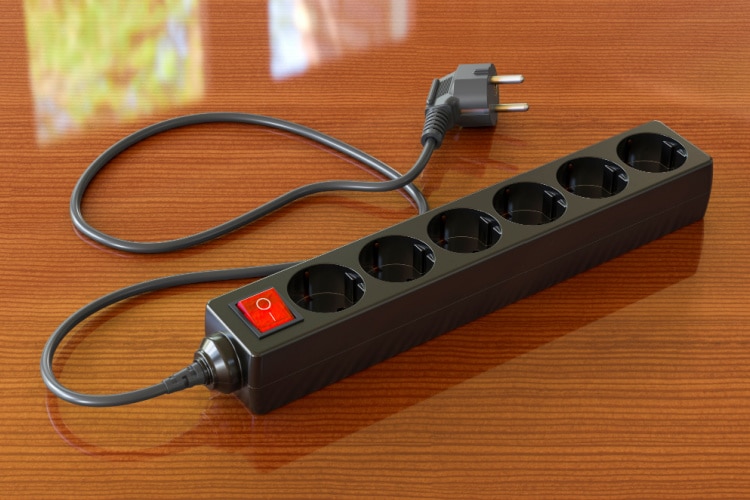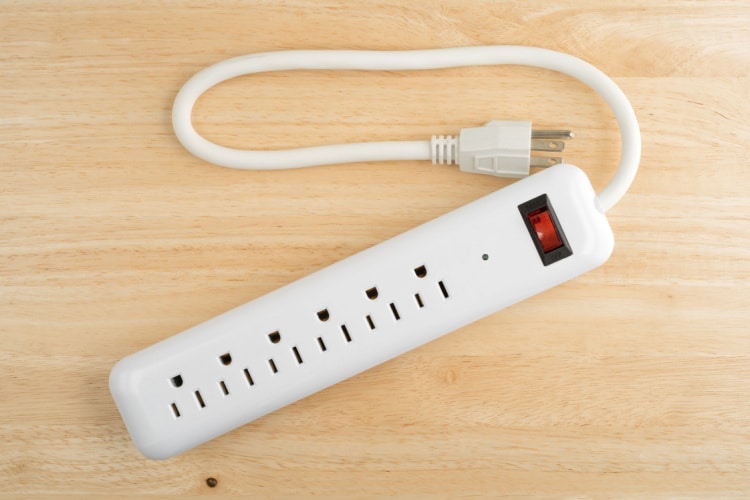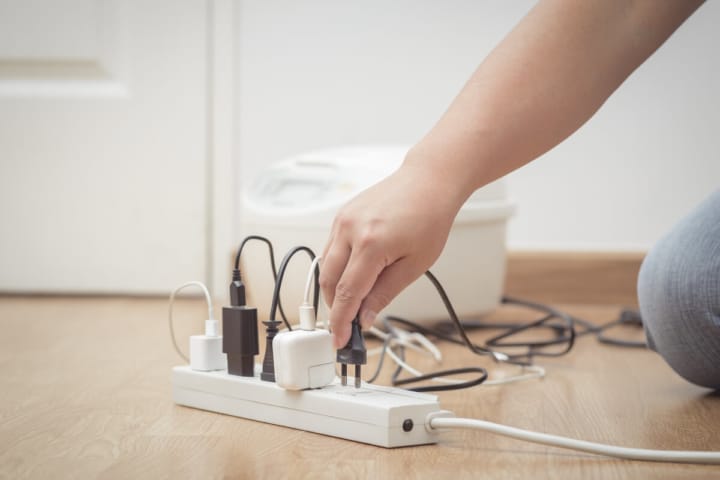The two power plugs of a typical wall outlet are not enough to power all the devices we need within a typical room.
For example, powering up a gaming studio or home office requires outlets for a computer, monitor, speakers, desk lamp, printer, modem, and other gadgets. Since normal outlets don’t have that many plugs, people use a power strip or a surge protector to power all of their devices.
Power strips and surge protectors are a budget-friendly way to plug more electrical devices into the same outlet. They look nearly identical but aren’t the same.
Power strips offer practicality but not protection. Surge protectors provide both. In this article, we’ll dive deep into the difference between these items and help you decide which fits your needs better.
Difference Between Surge Protector and Power Strip
The main difference between surge protectors and power strips is that a surge protector protects plugged devices from a power surge, while a power strip does not.
Yet, they’re both extension cords with several power plugs, so people often confuse them. Let’s explore their characteristics in more detail to ensure you don’t confuse them again.
Appearance
Power strips and surge protectors have a similar appearance. Luckily, there are a few distinguishing characteristics that help in telling them apart.

Both are extension cables with numerous power outlets and an on/off switch. Yet, with a surge protector, you can find details about its joule rating and other safety features on its packaging or on the back of the product. Power strips lack these safety features, so if there’s no joule rating on the product, it’s most likely just a power strip.

Furthermore, surge protectors have LED indicators. These LED lights show that the surge protector is active and provides security to devices when plugged in. A power strip does not have indicator LEDs. So if your extension cable has a light on the switch, it’s a surge protector.
Usage
A surge suppressor is often more recommended than a power strip because of the safety features it offers.
However, you might not need to safeguard every appliance and device from a power spike. That’s why power strips are ideal for powering several devices nearby that don’t draw much power from an outlet. Some examples include a desk lamp, digital clock, or other small and budget-friendly gadgets.
In the event of a power surge, chances are these small devices won’t be affected (they’re not turned on constantly), or if they are, replacing them is not a headache.
What’s more, the power strip’s on/off button is a helpful method to quickly turn everything off and save energy when none of the plugged devices are in use.
Surge protectors are an excellent choice to conserve energy while powering several devices at once. Because they offer surge protection, you can plug in several expensive pieces of equipment without fretting electrical damage. The following gadgets are a common choice for surge protectors: speakers, PCs, gaming consoles, modems, monitors, smart TVs, and other expensive gadgets.
One thing to note is to buy surge protectors with higher joule ratings, as they’re safer and able to support more devices. You may also use two surge protectors on the same outlet without worrying about electrical overload. However, never plug in multiple appliances that draw a lot of electricity, like a microwave, dryer, fridge, washer, air conditioner, etc. These high-capacity appliances absolutely need to have their dedicated circuit.
Price
Both surge protectors and power strips are budget-friendly options for extra outlet space and allow you to plug in multiple devices in close proximity.
If you want to safeguard your gadgets, surge arresters are the best option. They’re available for as little as $20, but more expensive choices go for $50 or more.
Premium options might cost a little more but are better equipped to safeguard your devices from power spikes. Even though you might think they’re a big investment, remember that it’s still less than the cost of replacing your appliances if electrical waves damage them.
On the other hand, power strips are reasonably priced but offer no security. Power strips are available for less than $20. So, if you want more power outlets, that is your best choice.
Surge Protector vs Surge Suppressor Comparison Table
| Category | Surge Protector | Power Strip |
|---|---|---|
| Definition | An extension cable with numerous sockets and power surge protection | An extension cable with numerous outlets |
| Functionality | Offers extra outlet space and protects plugged-in devices from electrical damage | Offers extra outlet space |
| Appearance | Extension cord with multiple power sockets & on/off button, joule rating & LED lights | Extension cord with multiple power sockets & on/off button |
| Usability | Offers multiple outlet sockets, conserves energy, and is a highly recommended protection tool for costly electronics like PCs, gaming consoles, speakers, etc. | Offers multiple outlet sockets, conserves energy, and is usually recommended for regular household gadgets that don’t draw a lot of power and won’t cost a lot to repair in case of a power surge, for example, desk lamps, digital clocks, etc. |
| Price | Pricier; the higher the joule rating, the more expensive it is. They cost from $20 to $50 if not more. | More budget-friendly, costing around $20 |
Safety Tips for Using Surge Protectors and Power Strips
Surge protectors and power strips can be a handy fix for the lack of electrical outlets. However, many people take advantage of that extra outlet space and plug in many power-draining devices, which is a big no-no.
Both gadgets run the risk of electrical overload, especially if you plug in a lot of appliances and electronics simultaneously. It’s recommended that you keep the plugins to a minimum.
Also, plugging even just two heavy appliances that consume a lot of electricity may cause an electrical overload and be a potential fire hazard.
The following are devices and appliances that require their dedicated outlet:
- Big appliances like microwaves, fridges, washers and dryers, air conditioners, etc.
- Small appliances like slow cookers, coffee makers, toasters, blenders, etc.
- Beauty tools like hair dryers, flat hair irons, etc.

Another thing you should avoid is the daisy-chain technique. In other words, never connect a surge protector or power strip to another surge protector or power strip. You run the risk of electrical overload, permanent gadget damage, major electrical system problems, and even a fire.
Finally, avoid purchasing an untested power outlet. Pick a power strip or surge protector tested and certified for safety by OSHA’s Nationally Recognized Testing Laboratory.
Conclusion
To summarize, a surge protector and power strip have multiple electrical sockets for housing multiple devices. However, in addition to adding extra outlet space, surge protectors shield plugged-in devices from a voltage spike — power strips don’t.
If you believe the digital clock or festive decorations you’re planning on plugging in don’t need this kind of security, choose a power plug. However, buy a surge protector if you need to plug in something valuable and expensive, like a gaming studio.
Their appearance may confuse you, as both have an on/off switch and multiple sockets, but you’ll know that you’re buying a surge protector if it has LED lights and a joule rating.